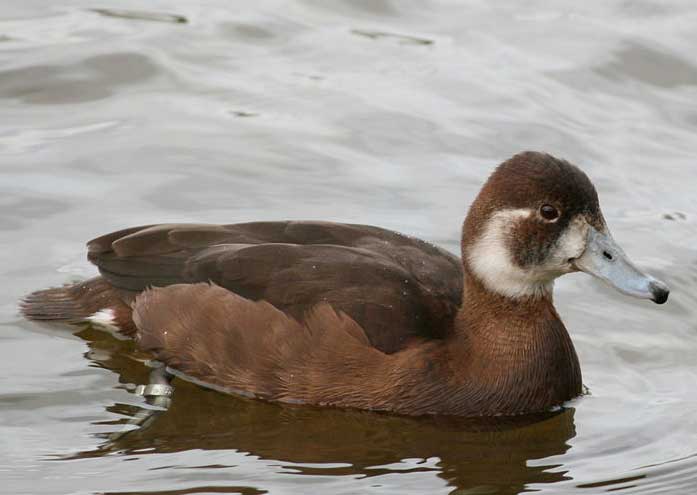
Netta erythrophthalma
Superregnum: Eukaryota
Cladus: Unikonta
Cladus: Opisthokonta
Cladus: Holozoa
Regnum: Animalia
Subregnum: Eumetazoa
Cladus: Bilateria
Cladus: Nephrozoa
Superphylum: Deuterostomia
Phylum: Chordata
Subphylum: Vertebrata
Infraphylum: Gnathostomata
Megaclassis: Osteichthyes
Cladus: Sarcopterygii
Cladus: Rhipidistia
Cladus: Tetrapodomorpha
Cladus: Eotetrapodiformes
Cladus: Elpistostegalia
Superclassis: Tetrapoda
Cladus: Reptiliomorpha
Cladus: Amniota
Classis: Reptilia
Cladus: Eureptilia
Cladus: Romeriida
Subclassis: Diapsida
Cladus: Sauria
Infraclassis: Archosauromorpha
Cladus: Crurotarsi
Divisio: Archosauria
Cladus: Avemetatarsalia
Cladus: Ornithodira
Subtaxon: Dinosauromorpha
Cladus: Dinosauriformes
Cladus: Dracohors
Cladus: Dinosauria
Cladus: Saurischia
Cladus: Eusaurischia
Subordo: Theropoda
Cladus: Neotheropoda
Cladus: Averostra
Cladus: Tetanurae
Cladus: Avetheropoda
Cladus: Coelurosauria
Cladus: Tyrannoraptora
Cladus: Maniraptoromorpha
Cladus: Maniraptoriformes
Cladus: Maniraptora
Cladus: Pennaraptora
Cladus: Paraves
Cladus: Eumaniraptora
Cladus: Avialae
Infraclassis: Aves
Cladus: Avebrevicauda
Cladus: Pygostylia
Cladus: Ornithothoraces
Cladus: Ornithuromorpha
Cladus: Carinatae
Parvclassis: Neornithes
Cohors: Neognathae
Cladus: Pangalloanserae
Cladus: Galloanseres
Ordo: Anseriformes
Familia: Anatidae
Subfamilia: Anatinae
Genus: Netta
Species: Netta erythrophthalma
Subspecies: N. e. brunnea – N. e. erythrophthalma
Name
Netta erythrophthalma (Wied-Neuwied, 1833)
Synonyms
Anas erythrophthalma (protonym)
Vernacular names
Afrikaans: Bruineend
čeština: Zrzohlávka rudooká
Deutsch: Rotaugenente
English: Southern Pochard
Esperanto: Ruĝokula anaso
español: Pato Morado
suomi: Ruskonarsku
français: Nette brune
italiano: Fistione meridionale
Nederlands: Bruine Krooneend
norsk: Fløyelsand
svenska: Sydlig brunand
The southern pochard (Netta erythrophthalma) is a species of duck, and a member of the genus Netta. There are two subspecies, the South American (southern) pochard N. e. erythrophthalma (Wied-Neuwied, 1833) and the African (southern) pochard N. e. brunnea (Eyton, 1838).
The South American pochard has a fragmented range and is found from Colombia, Venezuela, Brazil, Ecuador, Peru, Bolivia and Argentina to Chile. Here it occurs in a wide variety of shallow fresh waters with submerged vegetation, from the lowlands up to 3,700 metres.
The African pochard occurs from the Cape to the Ethiopian highlands on water bodies with or without emergent vegetation. They are suspected to have been strong migrants in the past but the construction of numerous farm dams seems to allow them a more sedentary lifestyle. They reach highest concentrations in Africa's central plateaus and in the south-western winter rainfall region.
Taxonomy
Two syntype specimens of Nyroca brunnea Eyton (Monogr. Anat., 1838, p.161., pl.23.), the African Southern Pochard, are held in the vertebrate zoology collections of National Museums Liverpool at World Museum, with accession numbers NML-VZ D832 (male adult) and NML-VZ D832a (female adult).[2] The specimens were collected in South Africa and came to the Liverpool national collection via Thomas Campbell Eyton’s collection and the 13th Earl of Derby’s collection which was bequeathed to the city of Liverpool.[2] There are two other syntype specimens, including NHMUK 1845.7.6.271, in the Natural History Museum at Tring.[3]
Nyroca brunnea
Habits
Southern pochards are sociable and gregarious. They have been seen in groups of up to 5,000.
Mating and nesting
The birds are solitary nesters, building nests out of leaves and stems on the banks of a river surrounded by vegetation.[4] The female southern pochard lays a clutch consisting of six to fifteen eggs. The female incubates the eggs for 20 to 28 days.[4] Once the eggs hatch, the mother leads them immediately to water.
Eating habits
The southern pochard eats mainly aquatic plants, which it finds when diving.[5][6] The adults also feed on larvae, pupae, aquatic animals and plant material.[6]
Conservation status
The southern pochard population has been steadily declining since the 1970s. In 2016, the number of southern pochards was reported at around 25,000 in South America, but this could have been an overestimate due to a lack of data.[7]
References
BirdLife International (2016). "Netta erythrophthalma". IUCN Red List of Threatened Species. 2016: e.T22680354A92857172. doi:10.2305/IUCN.UK.2016-3.RLTS.T22680354A92857172.en. Retrieved 11 November 2021.
R. Wagstaffe (1978-12-01). Type Specimens of Birds in the Merseyside County Museums (formerly City of Liverpool Museums).
British Museum (Natural History); History), British Museum (Natural; History), British Museum (Natural; Harrison, Colin James Oliver; Warren, Rachel L. M. (1966). Type-specimens of birds in the British Museum (Natural History). Vol. 1. London: BM(NH).
"Netta erythrophthalma". biodiversityexplorer.org. Retrieved 23 October 2017.
"Pochard". www.britannica.com. Encyclopedia Britannica. Retrieved 23 October 2017.
"Southern pochards". beautyofbirds.com. Retrieved 24 October 2017.
Assessment of the Distribution and ... - Wildfowl.wwt.org.uk. https://wildfowl.wwt.org.uk/index.php/wildfowl/article/download/2657/1771
Cisneros-Heredia, Diego F. "Información Sobre la Distribución de Algunas Especies de Aves de Ecuador" (PDF). Boletín SAO (in Spanish). XVI (1): 7.
Maclean, G.L.; Harrison, J.A. "Southern Pochard". The atlas of southern African birds. Volume 1: Non-passerines.
Retrieved from "http://en.wikipedia.org/"
All text is available under the terms of the GNU Free Documentation License

